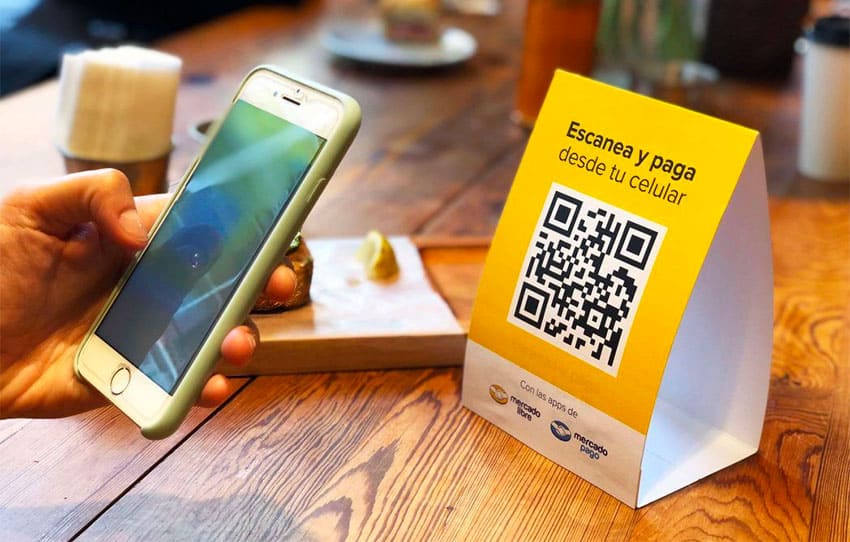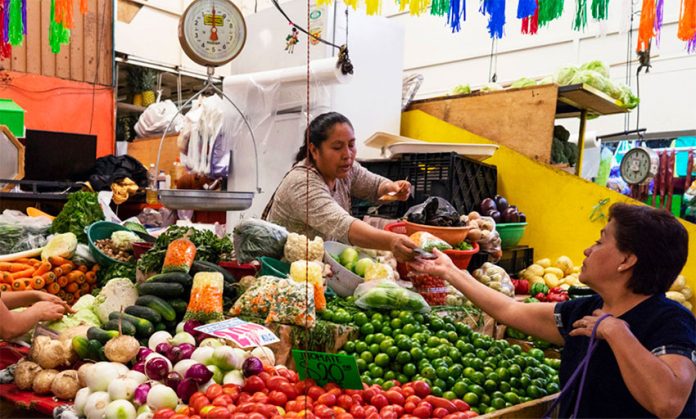A new digital payment system that allows consumers to make purchases with their mobile phones became operational on Tuesday but getting small business owners and market stallholders to adopt the technology could be a significant challenge and a potential barrier to its success.
For consumers, CoDi – short for Cobro Digital (Digital Charge) – is an app that scans bar codes to pay for purchases and transfer funds between banks.
One aim of the commission-free payment system, developed by the Bank of México, is to provide a convenient, easy-to-use payment method for shoppers.
Another is to encourage businesses that currently only accept cash payments – and may not pay all or any of the taxes they should – to move into the formal economy.
According to consumer insights analyst Carlos Hermosillo, large companies and chains are ready to accept payments via CoDi but small businesses such as mom and pop stores known as tienditas, stallholders at markets and others who operate in the informal sector “will take longer to react,” if at all.

A report in the newspaper El Financiero says that many small business owners fear that if they accept digital payments, their revenue streams will be closely monitored by tax authorities.
It is estimated that only 2% of about a million small, traditional businesses in Mexico such as butcher shops, stationary stores and tienditas currently accept methods of payment other than cash.
Another potential difficulty in getting small business owners to adopt the CoDi system is a lack of familiarity with the technology it uses: a recent poll showed that almost 60% of shopkeepers don’t know what a QR code is.
However, the spokesman for Expo Tendero (Shopkeepers’ Expo), an industry event that will be held in Mexico City in November, said there is interest among small business owners to offer digital payments.
“. . . They’re not closed [to the idea]; 53% said they’re interested in offering this type of service,” Pedro Fernández said.
For his part, the president of the National Association of Small Merchants rejected the claim that business owners’ reluctance to offer non-cash payments is related to their desire to continue to slip under the radar of tax authorities.
“We’re not large [tax] evaders and what can be collected via this channel won’t make a difference to the country’s public accounts . . .” Cuauhtémoc Rivera said.
At least in Mexico’s large and medium-sized cities, where mobile internet service is generally reliable, business owners will likely have to to offer their customers the option of paying via CoDi because they will miss out on sales if they don’t.
Ramiro de Jesús Cavazos, president of Conacca, a national umbrella organization that represents several market vendor associations, said that he expected that customers will demand the “ease of payment” that a service such as CoDi provides.
Their insistence on having access to the service could well come thick and fast.
Citibanamex, one of Mexico’s largest banks, said on Monday that it expects 5 million of its customers to start using CoDi within the next 12 months.
The bank predicted that 500,000 customers will begin using the app in the first two months of the system’s operation alone.
![]()
However, Citibanamex CEO Ernesto Torres Cantú said that the pace of the take-up of CoDi will depend on how well it is promoted and whether the federal government moves ahead with a plan to ban the use of cash to purchase gasoline and pay tolls.
A report published by the news agency Bloomberg in August said the government was considering the ban as a means to fight tax evasion and money laundering. The plan is also congruent with President López Obrador’s initiative to increase financial inclusion.
In Mexico City, authorities are stepping in to take the decision whether to offer CoDi payments out of the hands of some business owners.
The Secretariat of Economic Development (Sedeco) has stipulated that by November, all stallholders at so-called mercados sobre ruedas (markets on wheels) or tianguis that pop up in different neighborhoods of the capital on different days of the week must offer customers the option of paying both by bank card and the CoDi app.
“The entire mercado sobre ruedas system will have the digital payment system . . . the two options, cards and QR codes,” said Sedeco official Gabriel Leyva.
The Mexico City government hopes that the move will act as an incentive for stallholders at bricks and mortar markets to introduce digital payments as well.
Beyond street markets, Mexico City residents will also have guaranteed access to digital payments in the capital’s historic center, which will become the country’s first designated Zona CoDi, or CoDi Area.
Torres Cantú, who is also the vice president of the Mexican Banking Association, said that some business owners in the downtown are already offering digital payments while others are in the process of opening their CoDi accounts.
“The historic center Zona CoDi has already started but it will be completed in the next two or three weeks . . .” he said.
When Buen Fin, an annual four-day shopping event similar to Black Friday in the United States, takes place in November, CoDi payments will be available at 100,000 or more points of sale across the country, the Citibanamex chief said.
Source: El Financiero (sp), Milenio (sp), El Economista (sp)
